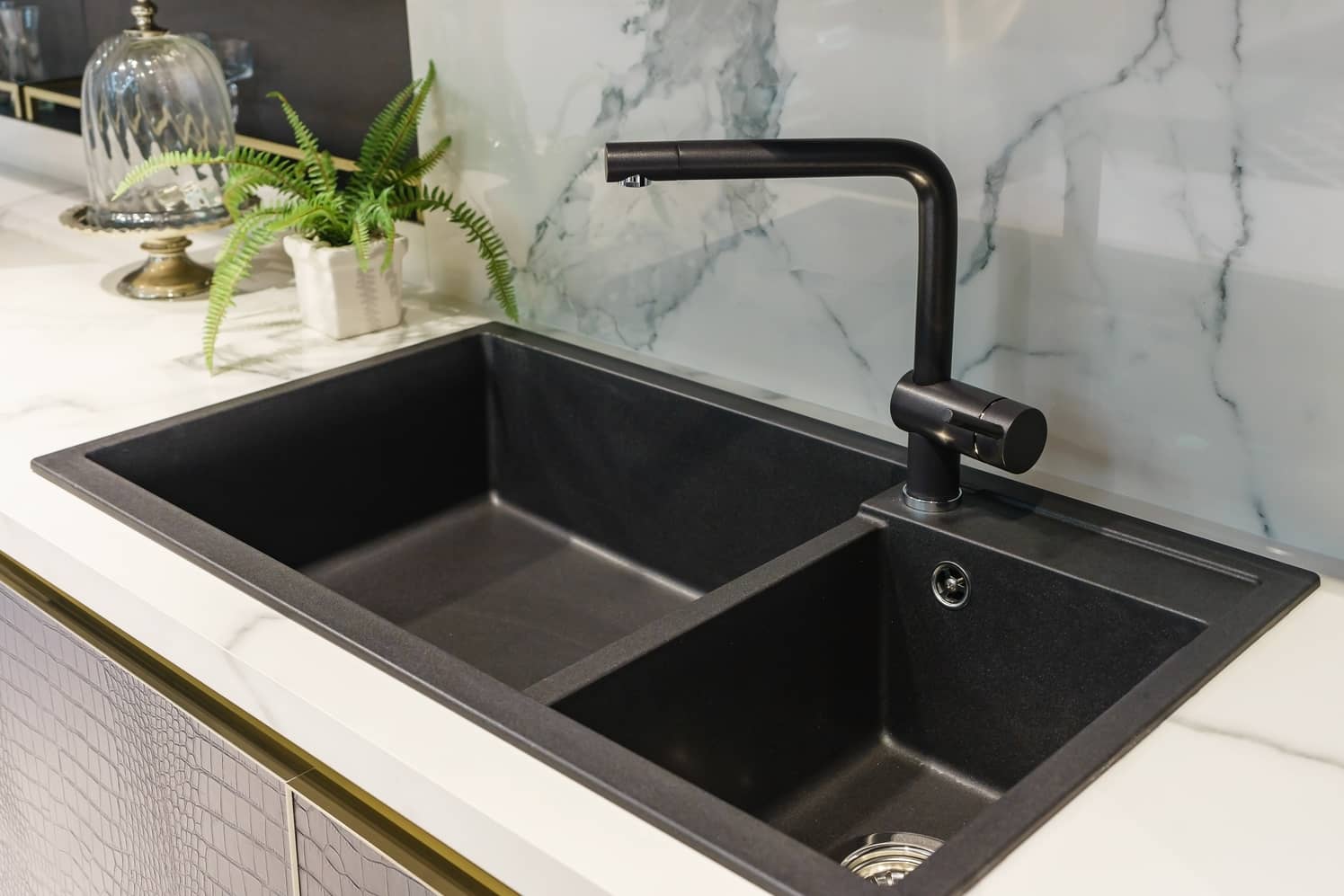
Stopping to measure the kitchen sink is important in any renovation or replacement project, but it’s easy to overlook until it’s too late. Many might assume they know their sink’s dimensions or that all kitchen sinks are the same size, only to learn that their new sink doesn’t fit their countertop or cabinetry.
Luckily, it’s a pretty simple task when you’re prepared. This post will walk you through the process step by step, from necessary measuring materials to ongoing sink maintenance.
When to Measure Your Kitchen Sink
There are several scenarios when measuring your kitchen sink is essential. If your current sink is damaged, outdated, or no longer meets your needs, accurate measurements are necessary to find a suitable replacement.
When planning a kitchen remodel, precise sink dimensions ensure that your new sink integrates seamlessly with the updated countertops and cabinets.
Additionally, if you’re unsure about your current sink’s size or need to provide measurements for any reason, knowing how to measure your kitchen sink properly is invaluable.

What You’ll Need
Before you get going, you’ll need a few tools and materials to measure your kitchen sink as accurately and efficiently as possible.
- A metal measuring tape for precision
- A pen and paper to record your measurements
- A flashlight to illuminate hard-to-see areas beneath the sink
- A ruler or straight edge for accurate measurements
Measuring the Kitchen Sink
Step 1) Determine the Sink’s Shape
Kitchen sinks come in various shapes, including rectangular, square, round, and oval. Begin by identifying your sink’s shape, as this will dictate which measurements you need to take. Rectangular and square sinks require length and width measurements, while round and oval sinks need diameter measurements.
Step 2) Measure the Length and Width
For rectangular or square sinks, use your measuring tape to determine the length and width. Measure from the widest points inside the sink, typically from one inside edge to the other. For the most accurate dimensions, measure at the top of the sink where it meets the countertop, and carefully record your measurements.
Similarly, if you have a round or oval sink, measure the diameter at the widest point. Oval sinks may also require both length and width measurements for more detailed dimensions.
Step 3) Measure the Depth
Then, measure your sink’s depth from the bottom to the top edge. Place your measuring tape at the deepest point of the sink and extend it straight up to the top edge. Record this measurement, as it’s crucial for ensuring compatibility with faucets, garbage disposals, and other accessories.
Step 4) Measure the Drain Size and Placement
Finally, locate your kitchen sink’s drain and measure its diameter. Be sure to measure the drain opening itself, not the surrounding flange. Note the distance from the sink’s edge to the center of the drain. Accurate drain measurements are essential for proper fit and installation of your new sink and any related components.
Tips for Accurate Measurements
- Use a helper to assist with holding the measuring tape or recording the dimensions
- Measure twice, purchase once – always double-check your measurements to avoid costly errors

Other Recommended Maintenance
Beyond measuring your kitchen sink, regular maintenance helps prolong its life and maintain its appearance.
- Clean and sanitize your sink regularly with mild soap and water or a specialized sink cleaner
- Check for leaks around the faucet, drain, and plumbing connections, addressing any issues promptly
- Seal any cracks or gaps in the sink or countertop to prevent water damage and bacterial growth
- Maintain your faucet and accessories by cleaning them regularly and replacing worn parts as needed
- Use a sink mat or grid to protect the bottom of your sink from scratches, dings, and damage
When to Call a Professional
While measuring your kitchen sink is relatively straightforward, there may be times when professional help is needed:
- If you’re unsure about any aspect of measuring your sink or encounter unexpected challenges
- If you need assistance selecting a compatible replacement sink that fits your space and design preferences
- If you require professional installation services to ensure a polished, leak-free result
Conclusion
Measuring your kitchen sink is a small but vital step in your renovation or replacement project. If you skip this step or get it wrong, it can cause annoying and costly problems later. Take your time, double-check your measurements, and don’t hesitate to ask for help if you need it.
Once you have the right measurements and know your sink’s size, you’ll be ready to pick out a great new sink or make sure the one you’ve chosen fits perfectly in your updated kitchen. To schedule a home inspection or get expert eyes on your finished project, reach out to Avalon Home Inspections in Atlanta, GA, and surrounding areas.






